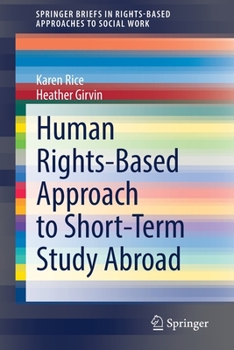Human Rights-Based Approach to Short-Term Study Abroad
Chapter 1: Finding our Framework
The authors examine the role short-term study abroad has played in higher education and traditional approaches taken to develop and implement study abroad excursions. They offer explanations for the missteps related to developing and implementing short-term study abroad trips, which have ranged from imperialism and greed to ill-conceived planning and poorly regulated Christian impulses (Corbett & Fikkert, 2012). Social theories (e.g., Blau, 1965; Foucault, 1980; Freire, 1970) are examined to offer an alternative and perhaps more transcendent explanation for the ineffectual attempts to help. Case scenarios, assignments, and exercises are utilized throughout to foster learning.
Chapter 2: Applying a Human Rights-Based FrameworkThis chapter outlines the specific framework the authors utilize and its key concepts: human dignity, non-discrimination, participation, transparency, and accountability (Androff, 2016). Focusing on one concept at a time, the authors explain how to apply each concept during the development and implementation of short-term study abroad trips. Throughout the chapter, case examples are provided as well as assignments and exercises to aid in the application of this framework.
Chapter 3: Evidence of Effects of Human Rights-Based Short-Term Study Abroad
Within this chapter, results from the authors' study that examined prior participants' perceptions of benefits gained, knowledge/skills learned, and practice applied following participation in short-term study abroad trips that utilized a human rights-based framework, are shared. Further, the authors offer various ways to measure effectiveness of the human rights-based framework from the perspective of key constituents: students, faculty leaders, community members.
Chapter 4: Utility of the Human Rights-Based Approach.
The human rights-based framework, as outlined in this textbook, can be utilized in other areas of the social work curriculum, including domestic service learning and semester-long field placements. The authors discuss the utility of this approach, specific to these two areas, and describe its implementation.





